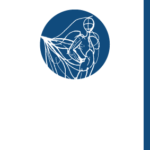Abstract
The main limit of the ultrasound resides on the fact that it is a strictly operator-dependent method, and, against
the growing discrepancy in the execution methods, the application of a specific protocol for the anatomical area of
interest has the function of implementing the achievement of the diagnostic result.
This experimentation aims to optimize the parameters of the ultrasound equipment, remaining placed in a strictly
technical context, without trying to emulate in any way the diagnostic ability of the medical professional.
The first step was mainly focused on ultrasound training and in particular on acquiring a good mastership of the
technical image parameters.
Subsequently there were performed some scans on five volunteer patients in various anatomical areas according to
two different orientations of the ultrasound transducer. The images were acquired at first by the use of the presets
already placed on the ultrasound equipment since the installation.
The next step was to create a new ultrasound protocol for musculoskeletal tissue changing the values of the technical
parameters of the image by scanning the five patients previously recruited.
The final step concerned the comparison with the medical professional who was required to scan the same five
patients in the same anatomical sections and according to the same scan plans previously set.
This experimentation compares the three protocols above mentioned, pursuing the aim to set up an execution protocol
for the ultrasound study of musculoskeletal tissue by defining the right setting for the main technical image parameters in order to optimize the performance of the exam, to reduce the time required to complete the survey and to obtain
good quality images.

This work is licensed under a Creative Commons Attribution-NonCommercial-NoDerivatives 4.0 International License.
Copyright (c) 2020 Journal of Advanced Health Care





